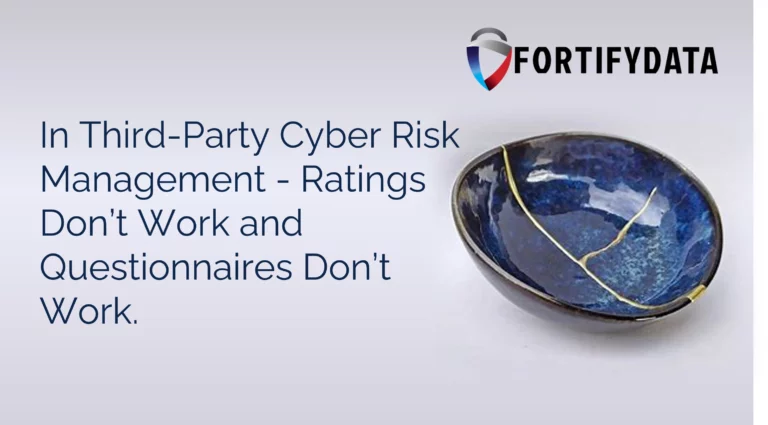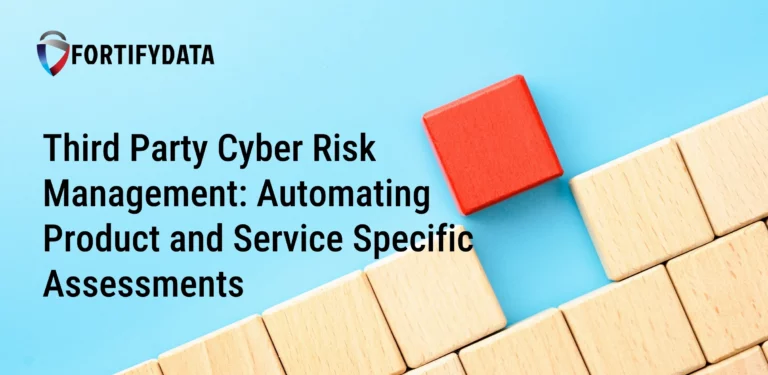
In third-party cyber risk management – ratings don’t work and questionnaires don’t work. The growing reliance on third-party software…
"This is an excellent starting point for any organization that wants to get serious about their cyber risk management. The system has the capability to grow as you become more sophisticated in your use"
IT Director
Services Industry
Third-Party Risk Management is the interaction or business dealings that you have with entities outside your own operations. Traditionally, it was vendors. Today, this extends to service provides, contractors, supply chain partners, even customers.
These relationships pose many risks to you, including cybersecurity, financial, operational, legal, reputational, and regulatory risks. Effective TPRM helps you minimize these risks by ensuring that your third-party relationships are aligned with your risk tolerance, compliance requirements, and business goals.
Here is why you need to migrate your TPRM program with a focus on cybersecurity today:
In the software development world, teams used a “waterfall” method to build a program. Waterfall is a sequential, linear approach that consists of requirements gathering, design, development, testing, and deployment. Each stage must be completed before the next one can begin, and there is limited opportunity for changes or revisions along the way. The problem is that it is slow and highly prone to error.
Most companies get stuck developing their TPRM using a waterfall method that looks like this:
Obviously, this is an incredibly slow process, can’t accommodate for dynamic changes, and prone to failure. This puts your organization at risk.
Agile, on the other hand, is a more flexible and iterative approach. It emphasizes collaboration, flexibility, and responding to change. The team regularly reassesses and adjusts priorities based on feedback and changing business needs. Agile moves fast and produces quick results.
Consider the two approaches:
An agile approach to TPRM lets you get started NOW! You iterate along the way and build the program as you go. You reduce risk immediately and create a program that is based on changing reality.
Here are the steps:
This approach allows you to reduce risk immediately and build a practical TPRM Program based on quick time to value.
FortifyData can get your TPRM Program started on your first 5 Vendors. We are so confident, we Guarantee it!
Call us today to schedule a 30-minute demonstration. We will show you how it works, give you pricing and an agreement that you can execute on quickly, if you chose to do so.



| Cookie | Duration | Description |
|---|---|---|
| cookielawinfo-checkbox-analytics | 11 months | This cookie is set by GDPR Cookie Consent plugin. The cookie is used to store the user consent for the cookies in the category "Analytics". |
| cookielawinfo-checkbox-functional | 11 months | The cookie is set by GDPR cookie consent to record the user consent for the cookies in the category "Functional". |
| cookielawinfo-checkbox-necessary | 11 months | This cookie is set by GDPR Cookie Consent plugin. The cookies is used to store the user consent for the cookies in the category "Necessary". |
| cookielawinfo-checkbox-others | 11 months | This cookie is set by GDPR Cookie Consent plugin. The cookie is used to store the user consent for the cookies in the category "Other. |
| cookielawinfo-checkbox-performance | 11 months | This cookie is set by GDPR Cookie Consent plugin. The cookie is used to store the user consent for the cookies in the category "Performance". |
| viewed_cookie_policy | 11 months | The cookie is set by the GDPR Cookie Consent plugin and is used to store whether or not user has consented to the use of cookies. It does not store any personal data. |